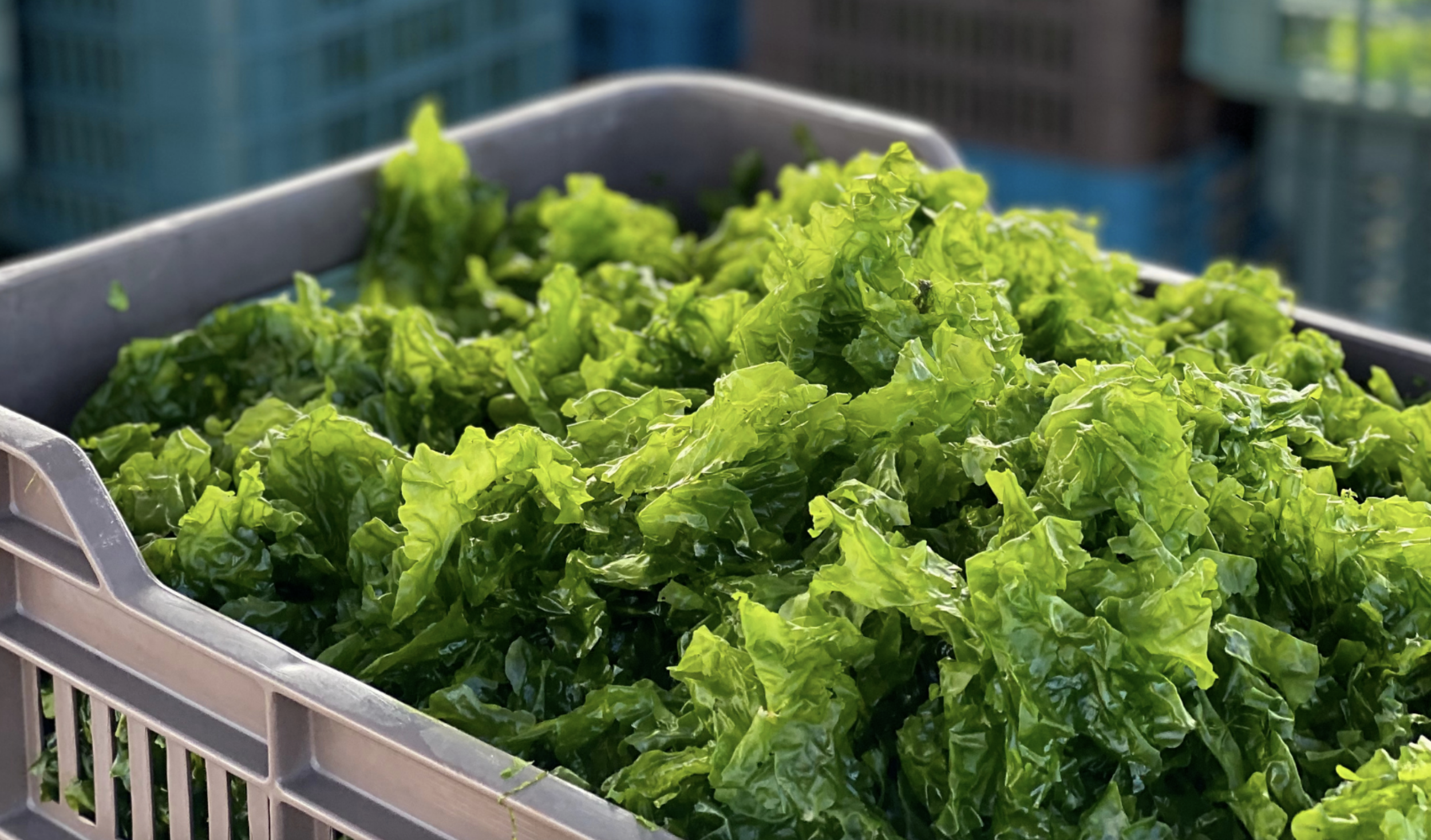BAJA SEA LETTUCE FARM TOUR
The first ever Blue Evolution Sea Lettuce farm chef tour + tasting was a success. A group of elite Baja and San Diego-area chefs got to experience the wonders of Sea Lettuce first hand at our farm in Eréndira, Mexico.
Blue Evolution Executive Chef Maylin Chavez led the group through a tasting of all Blue Evolution products, including our Alaskan Kelp and Baja Sea Lettuce, and created delicious bites to showcase these sea veggies along with other local seafood.
Chefs are at the forefront of food trends, and while the use of seaweed and sea vegetables is popular in may cuisines around the world, Blue Evolution products are just catching on in the USA and Mexico. Through their thoughtful consideration and creativity, these tastemakers got to experience the freshest of the fresh Sea Lettuce, right out of the tanks!
As people have become more conscious of farming, fishing, and grazing practices, there has been a rise in awareness and interest in regenerative agriculture like sea vegetable farming. We’re proud to say that our Sea Lettuce is Certified Organic, and uses zero freshwater to grow the crop.
How Can I Procure Blue Evolution Sea Vegetables?
Blue Evolution Alaskan Kelp (Kombu and Wakame) are available through Specialty Produce in San Diego, Corfini Gourmet in the PNW. In Mexico, foodservice providers can source Blue Evolution Sea Lettuce and Kelp through Jamat and Sargazo.
Regenerative Aquaculture
The term is still new and underdeveloped, but the concept of regenerative aquaculture, or regenerative ocean farming, was first used and developed by Bren Smith, a Canadian commercial fisherman turned ocean farmer, who founded GreenWave, who believes ocean farming is the new farming model of the future.
Smith’s version of regenerative ocean farming involves growing seaweed and shellfish in small underwater gardens. “What regenerative ocean farming does is create a new regenerative economy that’s based on conservation, restoration, and mitigation, as opposed to more extraction of resources.” Put simply, regenerative aquaculture is a more sustainable way to work with the sea.
“The ocean’s like why don’t you grow things that don’t swim away and don’t have to feed? When you look at the ocean that way, there are hundreds of kinds of shellfish, and thousands of plants we can grow. That opens up a whole frontier of agriculture,” says Bren Smith of Greenwave.
Blue Evolution and Regenerative Agriculture
It is an honor and privilege to say that Blue Evolution is one of the largest growers of regenerative seaweed crops in North America. We look at regenerative ocean farming as one step beyond sustainability. Not only does our kelp farming sustain the environment, it actually gives back to the environment by capturing carbon.
This is where our seaweed excels as a type of climate cuisine. Our seaweed farm based in Baja California, Mexico, requires zero freshwater, is 100% Certified Organic, and the seaweed actually absorbs carbon from the ocean water, so it leaves our farm clean and refreshed.





